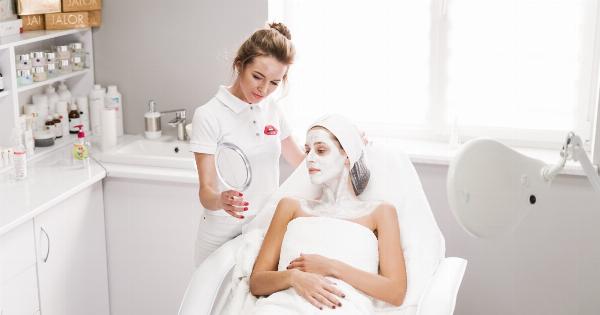If you’re experiencing pain or discomfort in your bladder or coccyx region, you may be seeking effective and efficient treatment options.
The good news is that there are various painless and fast solutions available for bladder and coccyx conditions, such as bladder infections, bladder spasms, and coccydynia. In this article, we will explore some of these treatment options to help you find relief and get back to living a pain-free life.
1. Medications
In many cases, medications can be used to relieve pain and treat bladder and coccyx issues. For bladder infections, your healthcare provider may prescribe antibiotics to combat the infection and alleviate symptoms.
For bladder spasms, medications such as anticholinergics can be used to relax the bladder muscles and reduce spasms. If you’re dealing with coccydynia, nonsteroidal anti-inflammatory drugs (NSAIDs) or pain relievers may be recommended to reduce pain and inflammation.
2. Physical Therapy
Physical therapy can also be an effective treatment option for bladder and coccyx conditions.
A trained physical therapist can guide you through exercises and stretches that target the affected areas, helping to strengthen muscles, improve flexibility, and reduce pain. Pelvic floor rehabilitation, in particular, can be beneficial for bladder issues as it focuses on strengthening the pelvic floor muscles responsible for bladder control.
3. Bladder Instillations
Bladder instillations involve the introduction of medications directly into the bladder through a catheter.
This treatment option can be effective for conditions such as interstitial cystitis, a chronic bladder condition characterized by pain and frequent urination. The instilled medications can help reduce inflammation and alleviate symptoms. This procedure is typically performed in a healthcare setting and may require multiple sessions for optimal results.
4. Lifestyle Modifications
Modifying certain aspects of your lifestyle can play a significant role in managing bladder and coccyx conditions. For bladder issues, it’s essential to stay well-hydrated and avoid bladder irritants such as caffeine, alcohol, and spicy foods.
Practicing good toilet habits, such as emptying your bladder completely and avoiding holding urine for extended periods, can also minimize symptoms. For coccyx pain, sitting on a cushion or using a specially designed coccyx cushion can help relieve pressure on the tailbone and reduce discomfort.
5. Nerve Stimulation
Nerve stimulation techniques can be used as an alternative treatment option for bladder conditions. One common method is sacral neuromodulation, where a device is implanted to stimulate the sacral nerves responsible for bladder control.
This stimulation can help regulate bladder activity and reduce symptoms such as urgency and frequency of urination. Another form of nerve stimulation is percutaneous tibial nerve stimulation (PTNS), which involves stimulating the tibial nerve in the lower leg to modulate bladder function.
6. Trigger Point Injections
For coccyx pain, trigger point injections can provide fast relief. This procedure involves injecting a local anesthetic and/or steroid medication into tender points or knots in the muscles around the coccyx.
Trigger point injections can help release muscle tension, reduce pain, and improve mobility. The procedure is typically performed in a healthcare setting by a trained professional.
7. Bladder Training
Bladder training is a behavioral therapy technique that aims to improve bladder control and reduce urinary frequency and urgency. This technique involves gradually increasing the time between bathroom visits and learning to suppress the urge to urinate.
Over time, bladder training can help retrain your bladder to hold urine for longer periods and reduce the frequency of trips to the bathroom.
8. Minimally Invasive Procedures
For more severe or persistent bladder conditions, minimally invasive procedures may be considered.
These procedures are performed using small incisions and specialized instruments, resulting in less pain and faster recovery compared to traditional open surgery. Examples of minimally invasive procedures for bladder conditions include transurethral resection of bladder tumors (TURBT) and laser therapy for bladder stones or tumors.
9. Psychotherapy and Counseling
Mental health can play a significant role in managing bladder conditions, especially if they are chronic or recurrent. Psychotherapy and counseling can help address any emotional or psychological factors that may be contributing to your symptoms.
Techniques such as cognitive-behavioral therapy (CBT) can assist in managing stress, anxiety, and depression, which can worsen bladder symptoms.
10. Surgical Interventions
Surgery is typically considered a last resort when other treatment options have failed or in severe cases where immediate intervention is necessary.
Surgical interventions for bladder conditions may include bladder augmentation, removal of bladder tumors, or the placement of a urinary diversion for individuals with bladder dysfunction. For coccyx pain, surgical interventions such as coccygectomy (surgical removal of the coccyx) may be recommended if conservative treatments have not provided adequate relief.



























